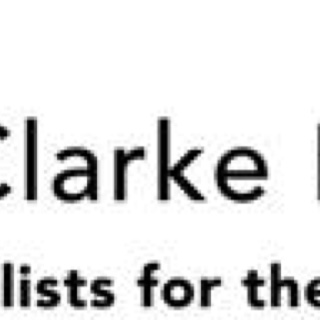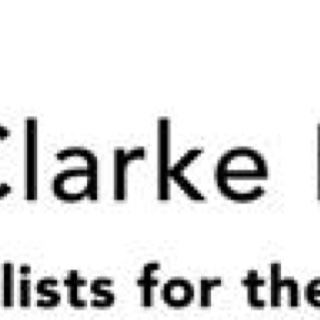Information
-
Month/Document No.
-
Main Contractor
-
Site
-
Elevation assessed & works completed.
-
Location
-
Conducted on
-
Prepared by
-
Persons Carrying out work to Area being Accessed
-
Please insert construction plan drawing of the project with assigned numbers to each elevation. (See point 3 of the reporting Rules)
-
BEFORE YOU START THIS REPORT, REFERENCE MUST BE MADE TO THE PROJECT ELEVATION LAYOUT SKETCH DETAILING THE EXACT LOCATION(S) INSPECTED.
Rules of WIR and Progress Reporting:
1. All reports need to be in for the dates that have been agreed on the Reporting Schedule. PM must contact HSEQ Department if there will be a delay.
2. The elevation inspected must be clearly identified using the Elevation Layout Sketch produced by the CM of the project, clearly identifying each elevation and floor. Ideally, there should be a separate Report for each elevation, however on smaller works, a single report for more than one elevation is acceptable.
3. Each report should include a description of the type of system / works undertaken.
4. Reports should also include quality issues not caused by CF, but which impact on our works.
5. Refer to recent Supplementary Quality Reports before starting.
6. We have issued standard Detail drawings reference numbers D01, D02, and so on. These need to be referred to throughout WIR and clearly show what is required. Only “Clarke” Drawings should be followed.
7. All reports must be up-loaded to Clarkes Server or emailed to HSEQ Dept before deadline.The next report that will follow must show how the errors were rectified. If improvement was not possible, e.g.: due to soft ground/lack of access, it needs to be described/explained. The answers column still needs to be highlighted red. However, if the error was rectified the section should be changed to green. The comment section is to be used for explanations of how and when error was rectified.
8. If project manager has found an error during the assessment, it must be noted and fixed before consecutive stages of works progresses, eg: CP board cannot start before Metsec sub frame is properly fixed. Quality Control Manager cannot accept the next WIR report until everything is fixed and up to date on the previous report. This is to make sure that all errors are corrected, and there are no error omissions.
9. Reports need to be genuine and relevant.
10. It is important that reports always have any delay events recorded.
11. All completed reports must be sent to head office, client and subcontractor. -
The most recent Drawing Issue Sheet must be displayed where all site personnel can see it.
-
Has the appointed sub-contractor read, understood and been given a copy of relevant parts of WIR?<br><br>
-
Elevation assessed & works completed.
-
Add media
-
Completed by Subcontractors:
Acceptance criteria/ Rules of Proper Workmanship 1. No work to be performed unless environmental conditions are as specified in therms of temperature, humidity and wind exposure. 2. Mixing time and proportions must be correct as per specification. 3. Safe systems of work must be enforced for working at height.
Pre start checks.
-
1. Are conditions, access safe?<br>
-
Add media
-
1. Have the SFS been given status and passed by the architect?<br>
-
Add media
-
2. Has the operative been given the relevant drawings and details to complete the works.?<br>
-
Add media
-
3. Has the Main Contractor signed off datum and gridlines settings?<br>
-
Add media
Inspection Result
-
Hold Point - Is it okay to proceed?<br>
-
Signed in by the subcontractor's representative.
-
Signed in by the Project Manager:
EPDM & Breather Membrane.
-
1. Are EPDM's correctly installed to concrete interfaces.?<br><br><br><br>
-
Add media
-
2. Is the wall substrate (Y-wall board)to correct line and level? <br><br><br><br>
-
Add media
-
3. Has EPDM been installed to all vents, rain water pipes, louvers bracket fixing centres?<br><br><br>
-
Add media
-
4. Has the breather membrane been dressed out and over horizontal flashings, pods, rain water pipes? Has breather membrane been sealed and taped with Dafa tape?<br><br><br><br><br>
-
Add media
-
5. Has breather membrane been taped at vertical joints and overlapped by 300mm at horizontal joints?<br><br><br><br>
-
Add media
-
6. Has the breather membrane been taped to and around all openings protrusions, and as specified on the Reference Drawing D 03 of "MClarke reference booklet"?<br><br><br>
-
Add media
-
7. Have fire barriers been installed as per specification? (Fire breaks must be continuous and mitred at corners).<br>Have correct fixing spikes been used (must extend through the fire barrier).? (MClarke Guide Drawing D01)<br><br><br><br><br><br><br>
-
Add media
-
8. Are sills, pods and flashings installed to the correct design details? Thickness colour and depth?
-
Add media
-
9. Are cills, pods and flashings installed to suit correct location, Has breather membrane been lapped over windows trim, sills and flashings as per detailed drawings?<br><br><br><br><br><br>
-
Add media
-
10. Have all outlets, brackets, vents, edges of insulation board, joints etc. been taped up with silver tape?<br><br><br><br><br>
-
Add media
-
11. Have fire pins been installed minimum one per board (and at least every square meter)?<br><br><br><br><br><br>
-
Add media
-
12. Has proper number of fixings been used?<br><br><br>
-
Add media
-
13. Has Spray bar test been done ? (Note: To be carried out after breather membrane is installed, and before cladding and internal plaster board is installed - 5% of cladded area and two areas as minimum. It must be done in accordance with specification requirements and CWCT.)<br><br><br><br><br>
-
Add media
Cladding (Brackets, Rails, Insulation)
-
1. Have subframe brackets been installed in accordance with the subframe layout drawings?<br><br><br><br>
-
Add media
-
2. Have T/L rails been fixed into brackets through specified holes, so as to permit thermal movement of the T/L-rail.?<br><br><br>
-
Add media
-
3. Have thermal pads been installed behind brackets?<br><br><br>
-
Add media
-
4. Have bracket fixings been torqued correctly using correct torque drill?( was the screw driver sat at correct torque)?<br><br><br>
-
Add media
-
5. Have brackets been fixed at stud locations?<br><br><br>
-
Add media
-
6. Have there been one fixed point bracket and two floating points brackets maintained per rail, or as stated on the brackets setting drawings?<br><br><br>
-
Add media
-
7. Have movement/deflection joints been maintained where required? (Support rails should never span over the buildings deflection joints)<br><br><br><br><br><br><br>
-
Add media
-
8. Has 15 mm gap been maintained between the vertical rails? (Panels must never span rail joints)<br><br><br><br>
-
Add media
-
9. Have Horizontal Suport Profiles (Top Hats) been fixed in accordance with the spacing indicated on the panel production drawings?<br><br><br>
-
Add media
-
10. Have horizontal support Profiles (Top hats) been fixed to T-profiles with minimum 2 fixings/per connection?<br><br><br>
-
Add media
-
11. Has access been provided for fitting DPM behind the T rails?<br>
-
Add media
-
12. Have rails/top hats been set from grid lines ?, Are these straight and plumb?<br><br><br><br>
-
Add media
-
13. Has the Project Manager checked the level/alignment with string line or laser?<br><br><br><br>
-
Add media
-
14. Has insulation been fitted as tight as possible?<br><br>
-
Add media
-
15. Has insulation been mechanically fixed to the wall with correct number of fixings.?<br><br><br>
-
Add media
-
16. Have fire pins been installed minimum one per board (and at least every square meter)?<br><br><br>
-
Add media
-
17. Have all outlets, brackets, vents, edges of insulation board, joints etc. been taped up with silver tape?<br><br><br>
-
Add media
-
18. Has the cladding been hose tested?<br><br><br>
-
Add media
Cladding - Panels
-
1. Have drilling holes in rail been made of proper size?<br><br><br>
-
Add media
-
2. Have drilling holes in panels been made of specified size ?<br><br><br><br>
-
Add media
-
3. Has rivet spacer nose piece been used on all rivet guns? <br>Rivet spacer nose piece as per specification Reference Drawing No. D05 (see MClarke reference booklet D05)<br><br><br>
-
Add media
-
4. Have the panels been held tight against rails during fixing stage, especially at facets?<br><br><br>
-
Add media
-
5. Have rivets of recommended dimension been used?<br><br><br><br><br><br>
-
Add media
-
6. Have wall planks been fixed with rivets at correct locations ? (as per detailed Panel Rivet Location)<br><br><br>
-
Add media
-
7. Have gaps been maintained between wall planks as peer detailed drawing?<br><br>
-
Add media
Insulated Render.
-
1. Has the applicator been given all detail drawings, levels, locations of firebreak expansion beads?<br><br><br>
-
Add media
-
2. Have horse shoe packers been used?<br><br><br><br>
-
Add media
-
3. Has starting bead been fitted with correct fixings and at correct centres?<br><br><br>
-
Add media
-
4. Has the applicator been given information of what way the adhesive is applied to board(dabs, grated trowel or picture frame).?<br><br><br>
-
Add media
-
5. Have all down pipes, vents, grounds, brackets etc. been installed on the wall and properly sealed?<br><br><br>
-
Add media
-
6. If permanent cappings are not in place, are temporary cappings on?<br><br><br>
-
Add media
-
7. Has the wall been checked for straightness before mesh was applied?<br><br><br>
-
Add media
-
8. Have all door frames and window frames been over lapped by insulation at a minimum of 10 mm in order to ensure of good sealing?<br><br><br>
-
Add media
-
9. Are down pipes on?<br><br><br><br>
-
Add media
-
10. Has mesh been properly overlapped at joints?<br><br><br>
-
Add media
-
11. Have additional mesh reinforcement been added to the insulation surface at four corners of the openings?<br><br><br>
-
Add media
-
12. Has the mesh been lapped over the top of the wall?<br><br><br>
-
Add media
-
13. Were insulation boards additionally fixed to the substrate with proper number of mechanical fixings?<br><br><br>
-
Add media
-
14. Have two number of base coat been applied and sponged ?<br><br><br>
-
Add media
-
15. Has all protection been done?<br><br><br>
-
Add media
-
16. Is the wall suitable for application of the Acrylic coat? (Weather forecast must be checked before application)<br><br><br><br>
-
Add media
-
17. Is wall dry and free from bumps and hollows before application of Final coat?( must be checked with 2m straight edge)<br><br><br><br>
-
Add media
Inspection result/comments.
-
Site notes
-
Add media
-
Signed off by the subcontractor's representative.
-
Signed by Project Manager.
-
Should you have any enquiries regarding this inspection report please contact M Clarke & Sons on 02825822500.








